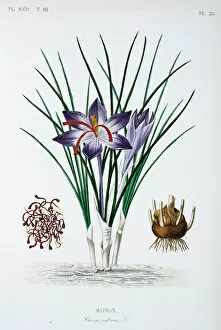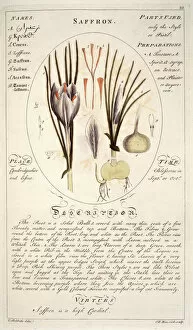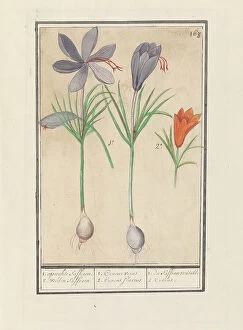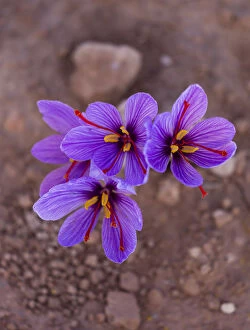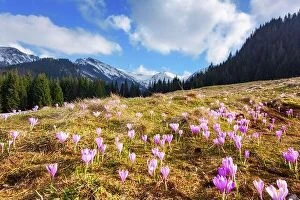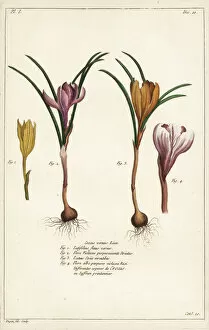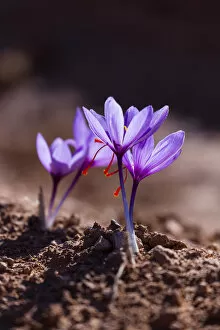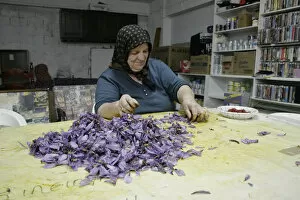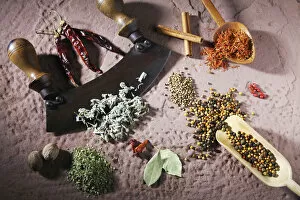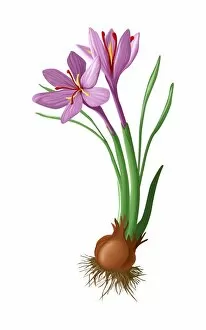Saffron Crocus Collection
"Saffron Crocus: The Golden Treasure of Catalonia, Spain" Crocus sativus, commonly known as saffron crocus
For sale as Licensed Images
Choose your image, Select your licence and Download the media
"Saffron Crocus: The Golden Treasure of Catalonia, Spain" Crocus sativus, commonly known as saffron crocus, is a captivating flower that has been cultivated for centuries for its precious spice - saffron. Found in the picturesque region of Lleida, Catalonia, Spain, these vibrant flowers bloom in November, transforming the landscape into a sea of purple hues. The delicate petals of the Saffron crocuses (Crocus sativus) hold within them an invaluable treasure - the crimson stigmas that are carefully handpicked to create one of the world's most sought-after spices. Known as "red gold, " saffron adds a distinct flavor and mesmerizing golden color to various cuisines around the globe. Intriguingly enough, this particular species stands apart from other spring crocuses like Crocus vernus with its unique characteristics. Its scientific name Crocus sativa reflects its significance as an economic plant and highlights its historical importance in trade and commerce. Dating back to 1880, wood engravings captured the essence of these enchanting blooms. In lithographs from "The Flowering Plants of Great Britain, " we can witness their beauty frozen in time. The vivid purple subject showcases nature's artistry at its finest. Today, Saffron crocus continues to captivate hearts worldwide with its alluring charm and culinary prowess. From traditional Spanish paella to exotic Indian biryanis and Persian delights like saffron-infused ice cream or tea – it leaves an indelible mark on every dish fortunate enough to be graced by its presence. So next time you savor a dish adorned with threads of this exquisite spice or admire fields blooming with purple splendor in Catalonia's countryside during November – remember that behind it lies not just a flower but also a tale steeped in history and cultural heritage; truly making Saffron crocus a treasure worth cherishing.

